The Miracle of Antler Growth
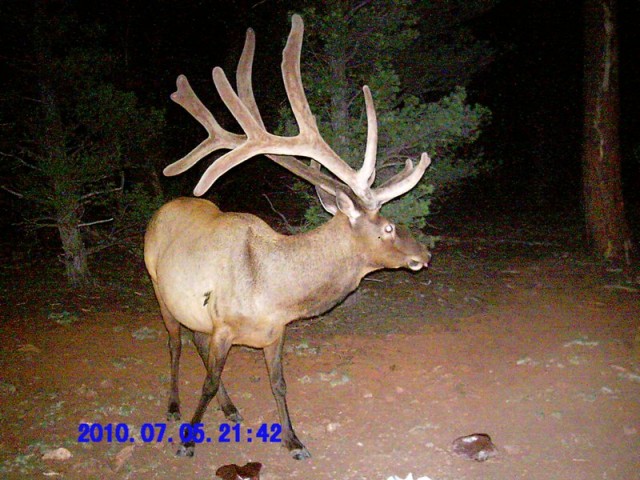 Hello Elk Lovers! We have officially started another year of the elk. By that I am referring to the start of antler growth. While I have had to stay near the phone recently to visit with successful Arizona elk tag holders, some of my friends and family have had the opportunity to do some shed hunting. They have returned with some nice finds and we are anticipating another great antler growth year for Arizona.
Hello Elk Lovers! We have officially started another year of the elk. By that I am referring to the start of antler growth. While I have had to stay near the phone recently to visit with successful Arizona elk tag holders, some of my friends and family have had the opportunity to do some shed hunting. They have returned with some nice finds and we are anticipating another great antler growth year for Arizona.
Antler growth, when you consider it, is an amazing miracle of nature by our Creator’s grand design. Just what are antlers and how do they develop?
Antlers sometimes mistakenly referred to as “horns” are actually true bone. Antlers differ from the hollow horns of cattle, because they comprise solid bone tissue with a honey combed structure. Pedicles are what antlers develop from and are the knobby, skin-covered nubs protruding from the elk’s skull that serve to support the antlers. The pedicles are a permanent fixture on the bull’s forehead, and are also the point from which the antlers annually break off.
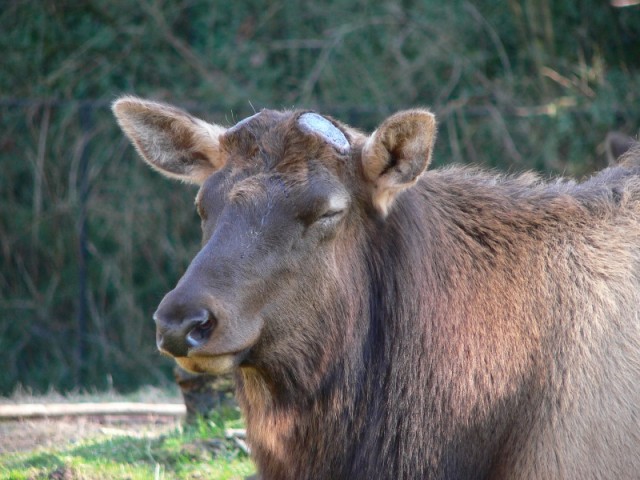 After shedding each year, antler growth begins in late March or early April depending on the age of the bull. Older bulls shed their antlers the earliest and begin regrowing new ones the earliest. That is why if you are shed hunting in March you may be finding larger fresh sheds (“browns”) while at the same time observing smaller bulls with antlers still attached.
After shedding each year, antler growth begins in late March or early April depending on the age of the bull. Older bulls shed their antlers the earliest and begin regrowing new ones the earliest. That is why if you are shed hunting in March you may be finding larger fresh sheds (“browns”) while at the same time observing smaller bulls with antlers still attached.
The bull’s new growing bone is covered by skin with numerous blood vessels which we refer to as “velvet”. A healthy bull elk can produce up to 10 pounds of velvet a year! This miraculous occurrence is why elk antler velvet has been used in the Orient for medicinal purposes for thousands of years. I have no first hand knowledge of its’ claimed medicinal value, however. This velvet feeds the antlers the vitamins and minerals necessary to build up the bone, and to promote normal antler growth. As you may observe in the photos, I use Trophy Rock mineral supplement to help maximize this process. It seems to be working!
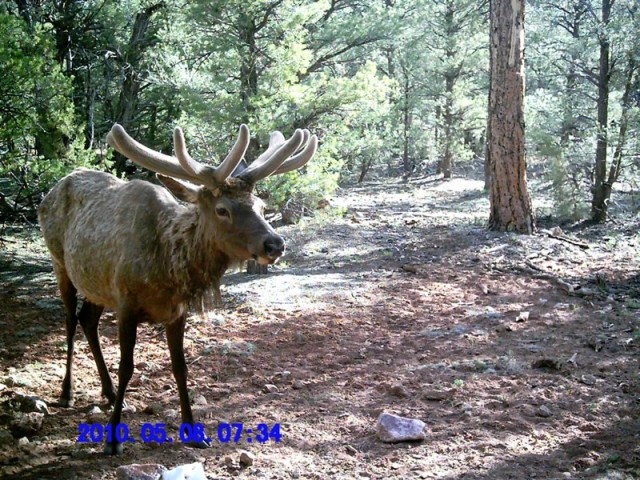 Antlers in the velvet can grow up to 1″ in one day! It is amazing to watch bulls antlers develop during the summer. I’ve been surprised by how much a big bull’s antlers can grow in just a weeks time when comparing trail camera photos. During early to mid stages of growth, the antlers are very sensitive and can be susceptible to injury which can result in abnormal antler growth. If a bull is spooked he may very well damage his antlers running through trees before they are fully developed. My observation has been that even if a bull damages his antlers one year, he can grow a normal set the following year.
Antlers in the velvet can grow up to 1″ in one day! It is amazing to watch bulls antlers develop during the summer. I’ve been surprised by how much a big bull’s antlers can grow in just a weeks time when comparing trail camera photos. During early to mid stages of growth, the antlers are very sensitive and can be susceptible to injury which can result in abnormal antler growth. If a bull is spooked he may very well damage his antlers running through trees before they are fully developed. My observation has been that even if a bull damages his antlers one year, he can grow a normal set the following year.
After the antlers have fully developed, the velvet is no longer needed, and a ring forms at the base of the antlers and cuts off the blood supply to the velvet. As a result, the velvet dries up, and falls off. This all takes place due to the bull’s hormone levels. 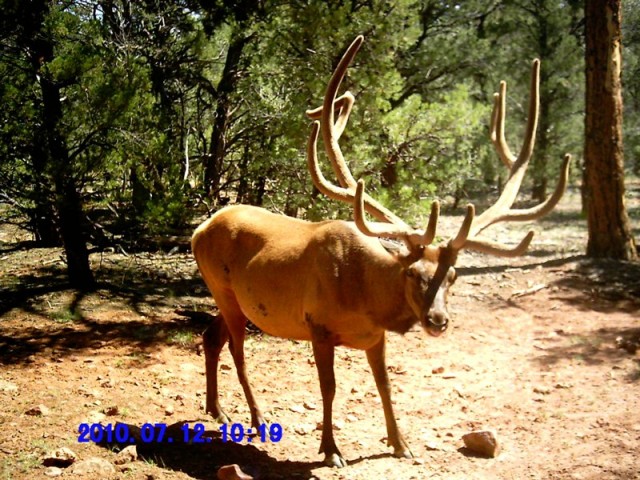 As the summer progresses and we approach early to mid August, testosterone levels increase in the bulls. This rise in hormone levels, results in the antlers hardening and the bulls subsequently rub off the drying velvet revealing the hardened antlers underneath. The entire shedding process can take anywhere from a few days to a couple of weeks to complete depending on how active the bull is with his tree raking.
As the summer progresses and we approach early to mid August, testosterone levels increase in the bulls. This rise in hormone levels, results in the antlers hardening and the bulls subsequently rub off the drying velvet revealing the hardened antlers underneath. The entire shedding process can take anywhere from a few days to a couple of weeks to complete depending on how active the bull is with his tree raking.
At this point antler growth is complete. All that is left is for the bull to darken his antlers by rubbing them on trees, brush and the ground. Bulls that utilize darker trees to rub such as Spruce, Pine and Pinion, etc. will have darker colored antlers when compared to bulls that rub on Cedar, Juniper, or Oak Brush. Shortly thereafter it’s time for our favorite season of all- the rut! During the rut, a bull will continue to rub and rake his antlers. At this time a bull’s raking is more for showing dominance and taking out aggression due to soaring testosterone levels.
A few months after the annual fall rut draws to a close a bull no longer needs his antlers. His antlers served to attract and impress cows for his harem, or to fight with his competitors for the breeding rights. At this time his antlers are shed once again due to decreasing levels of testosterone. Shortly thereafter, the antler growing process begins again.
Bulls will typically reach their peak antler development somewhere between the age of 8 to 12 years. Most bulls that survive beyond 12 years will soon start to regress in antler development. I once guided a hunter that tagged a bull that was aged by the Game & Fish at 13 1/2 years old. The bull’s body was thin and poor. His antlers appeared to be somewhat stunted as well, but what an amazing memory I have from the experience of this hunt.
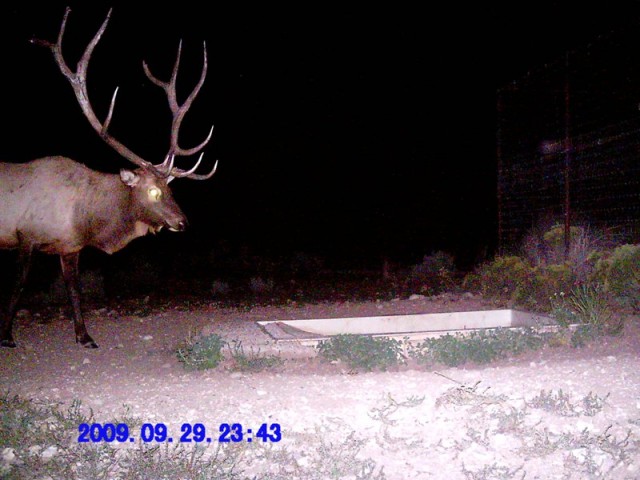 A bull’s antler growing potential is based on these factors; Genetics, Age, & feed quality which influences the bull’s overall health. Sure as I will never be 7 feet tall and play in the NBA, a bull with inferior genetics for antler growth will never be 400″ or even 350″ for that matter. An elk receives antler growth genes not just from his father, but also his mother. So both the bull and cow must have the right genes for big antlered offspring.
A bull’s antler growing potential is based on these factors; Genetics, Age, & feed quality which influences the bull’s overall health. Sure as I will never be 7 feet tall and play in the NBA, a bull with inferior genetics for antler growth will never be 400″ or even 350″ for that matter. An elk receives antler growth genes not just from his father, but also his mother. So both the bull and cow must have the right genes for big antlered offspring.
A bull must also reach a mature age in order to reach maximum antler growth. Some states manage areas/units for a targeted age class structure. These areas are typically draw only and hard to acquire permits for, as we all know too well!
Lastly, a bull can have Michael Jordan genetics, reach a mature age, but if he experiences poor range conditions due to drought, he will not grow maximum antlers that year. A bull’s antler growth can be affected by as much as 5 to 10% depending on the severity of drought conditions. This is especially apparent in the more arid Southwestern states. If all of these factors come together on a given year, you have the potential for maximum, trophy size antlers.
I hope you are all blessed in the draws this year and that you find a bull that has grown the kind of antlers that we all dream about! I hope this article was a benefit to you in understanding the true miracle and process of elk antler growth.
